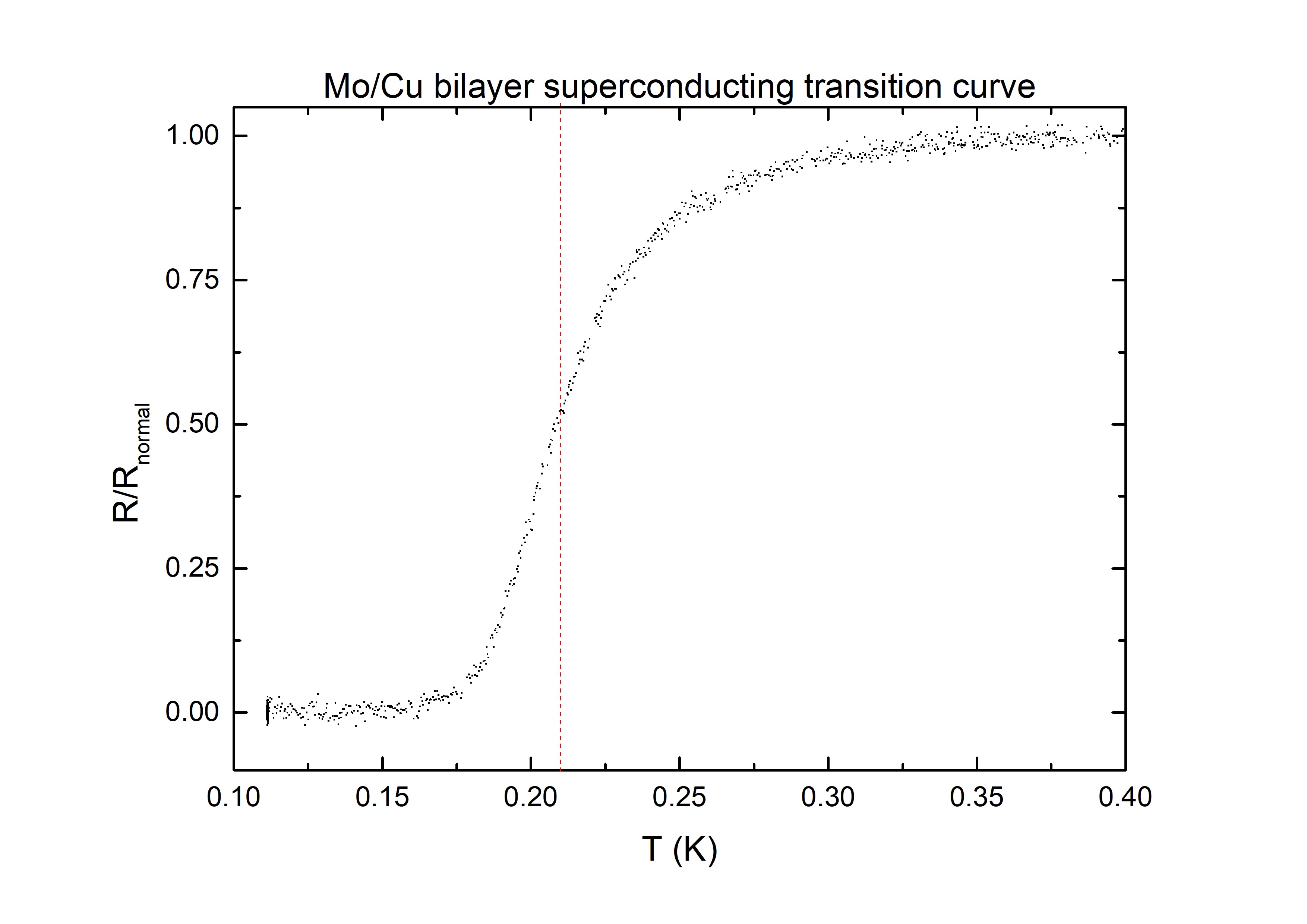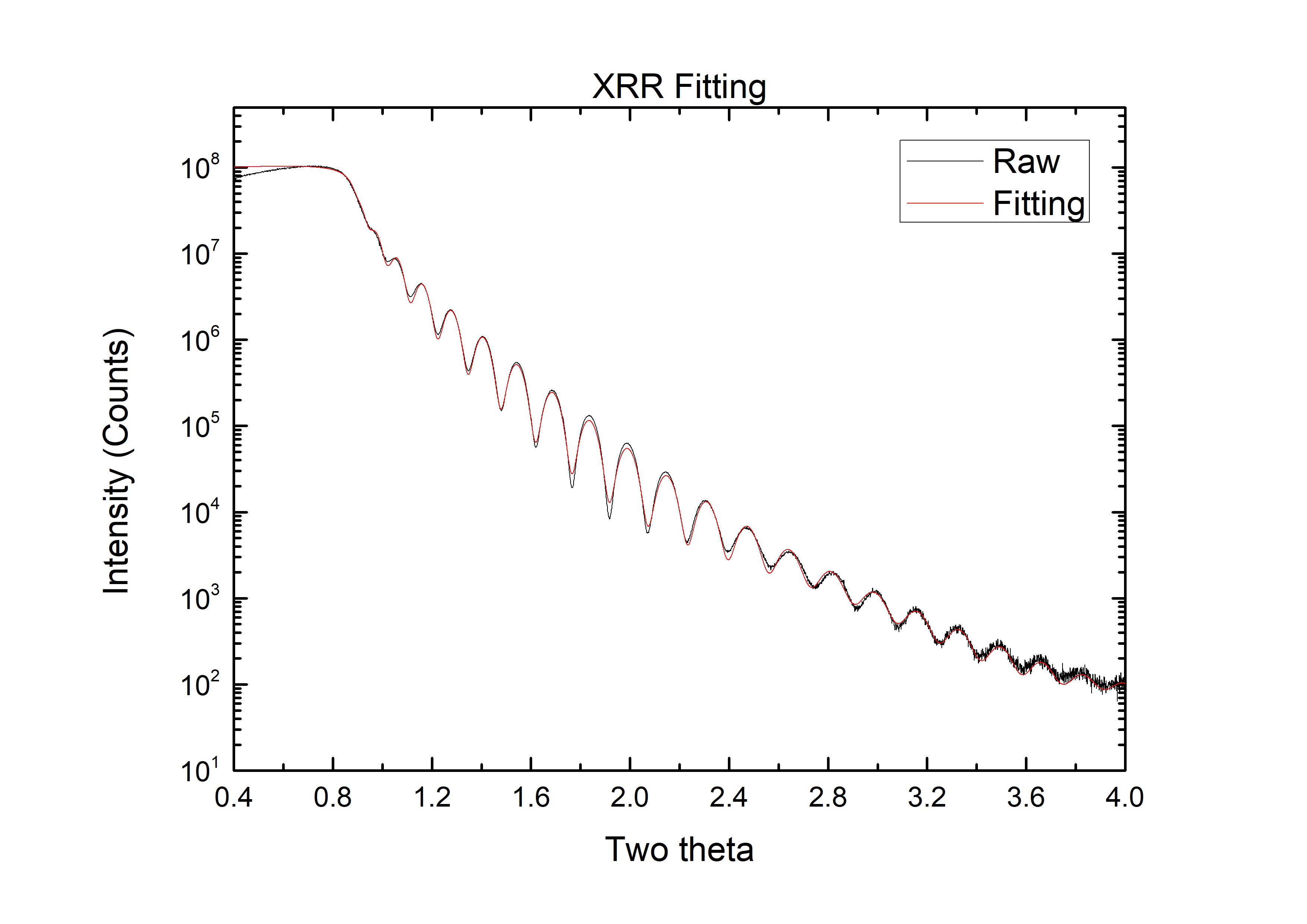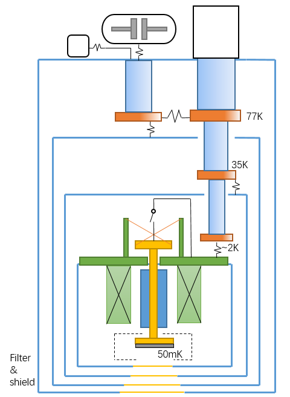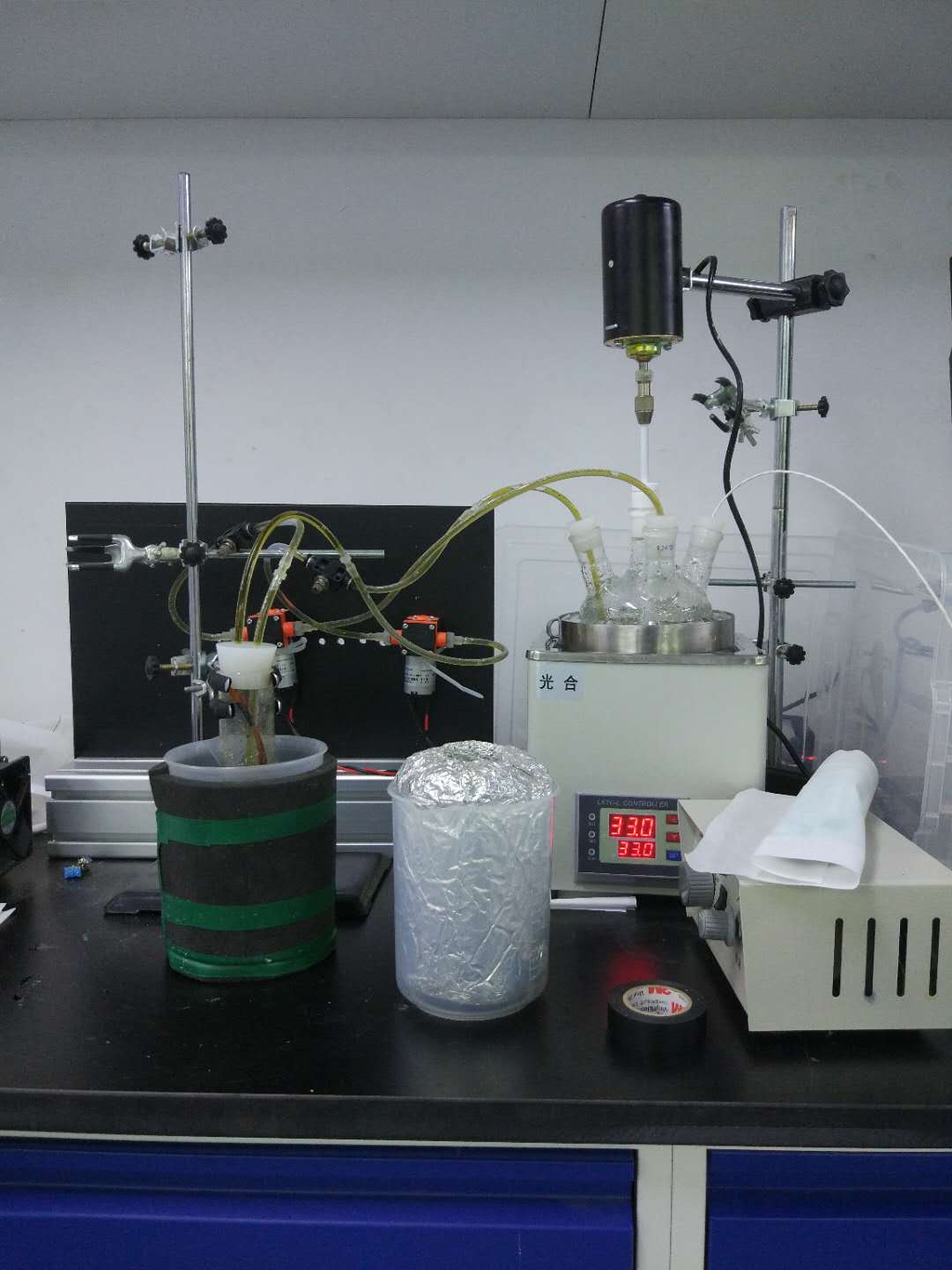We are developing superconducting transition-edge sensor (TES) for HUBS in our Low Temperature Detector Laboratory (LTD Lab).
The TES technology is based on a bilayer superconducting film that is made of a normal metal and a superconductor. Through adjusting the thickness of the metal or superconductor layer, the superconducting transition temperature of the bilayer can be tuned. Bilayer films are grown in a ultra-high vacuum environment, to minimize contamination. A high-quality film is characterized by low stress, high residual resistance ratio, narrow and smooth normal-superconducting transition region, appropriate transition temperature, etc.
At present, our lab has necessary facilities for the growth, characterization and storage of TES detector films, including sputtering and MBE system, in situ film stress analysis system, film thickness, density, macro and micro stress measurement system, room temperature electrical measurement system, vacuum furnace and storage equipments, which have been able to meet the most of the research requirements.
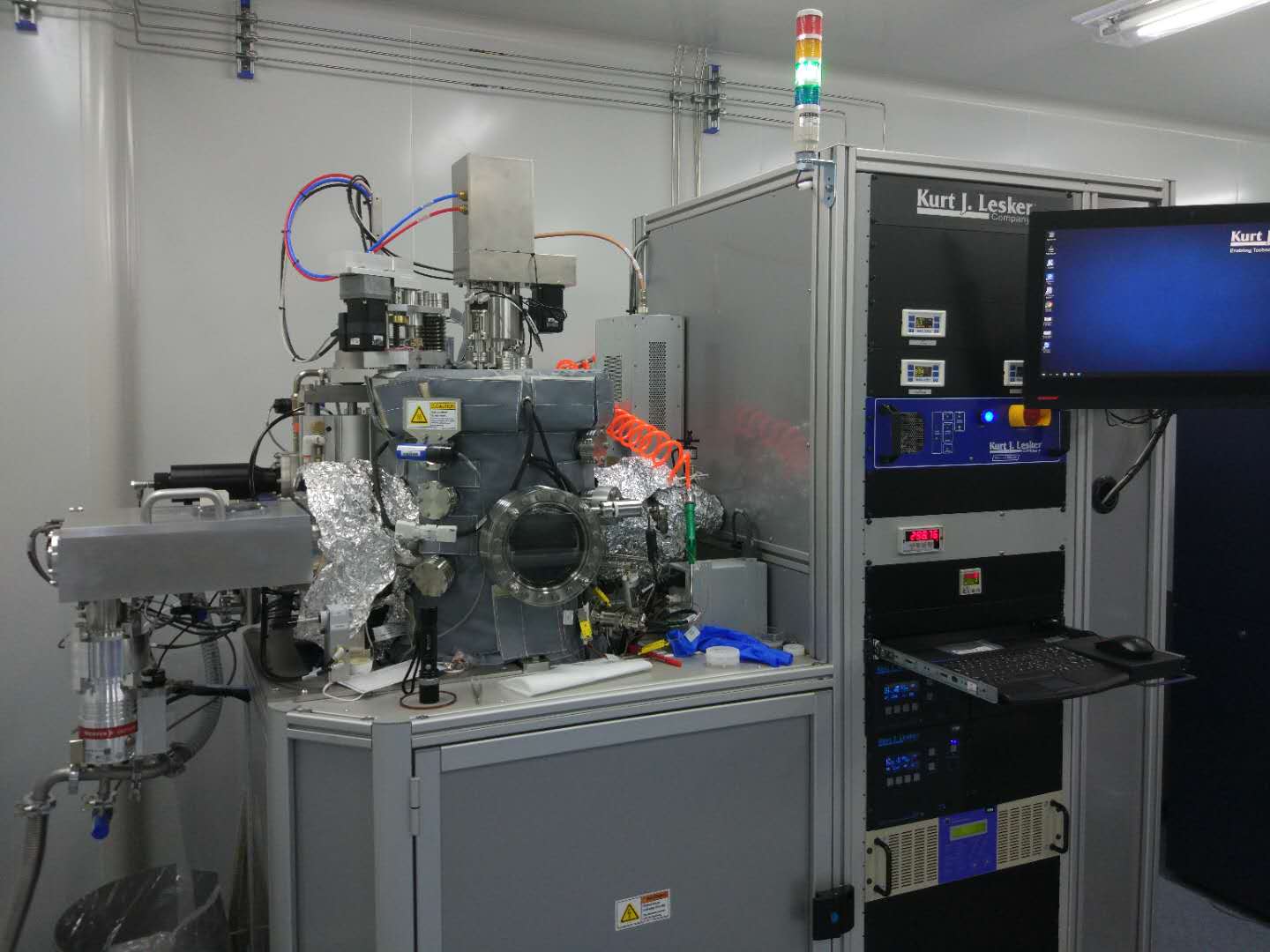 Sputtering System |
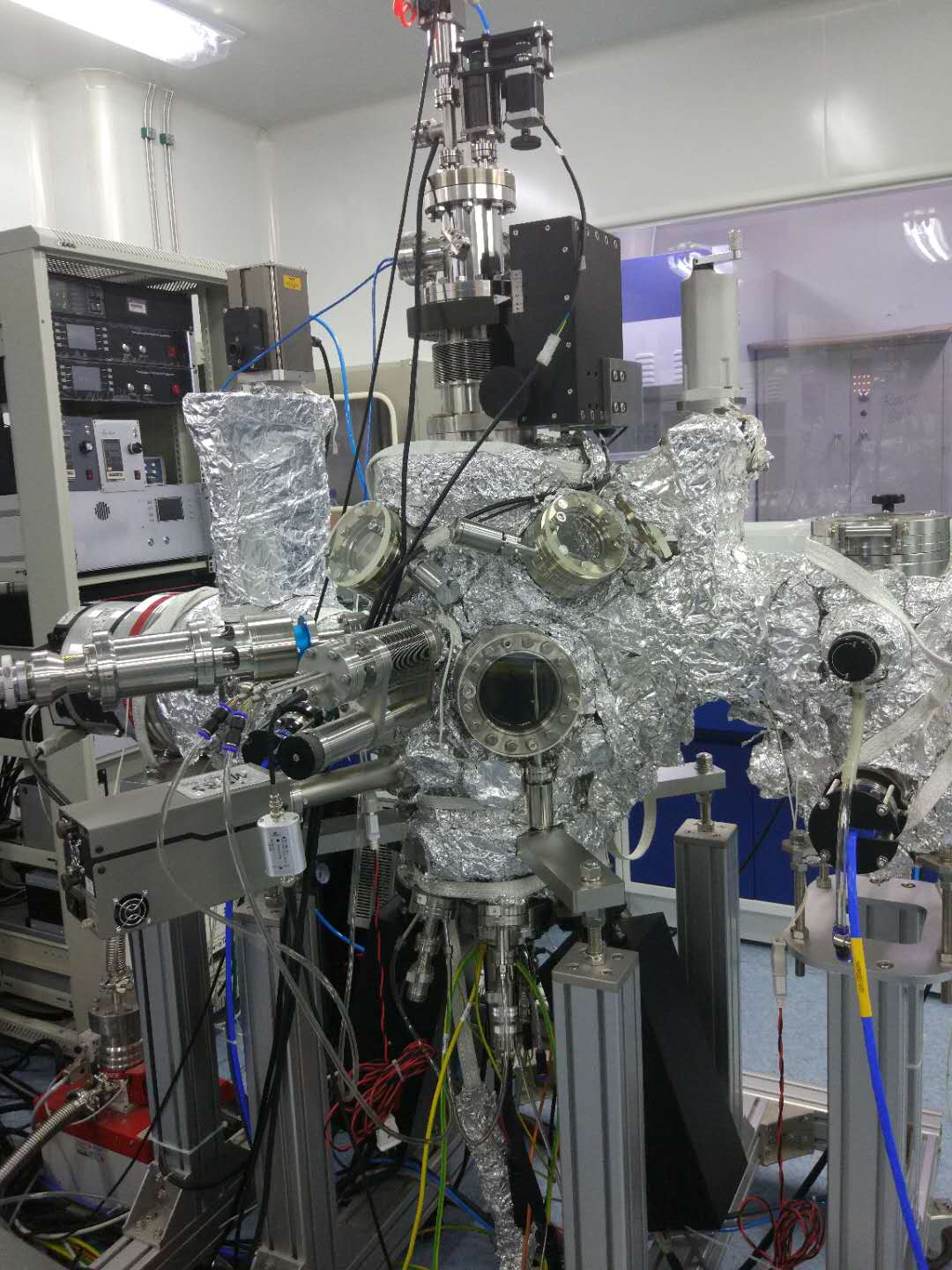 MBE System |
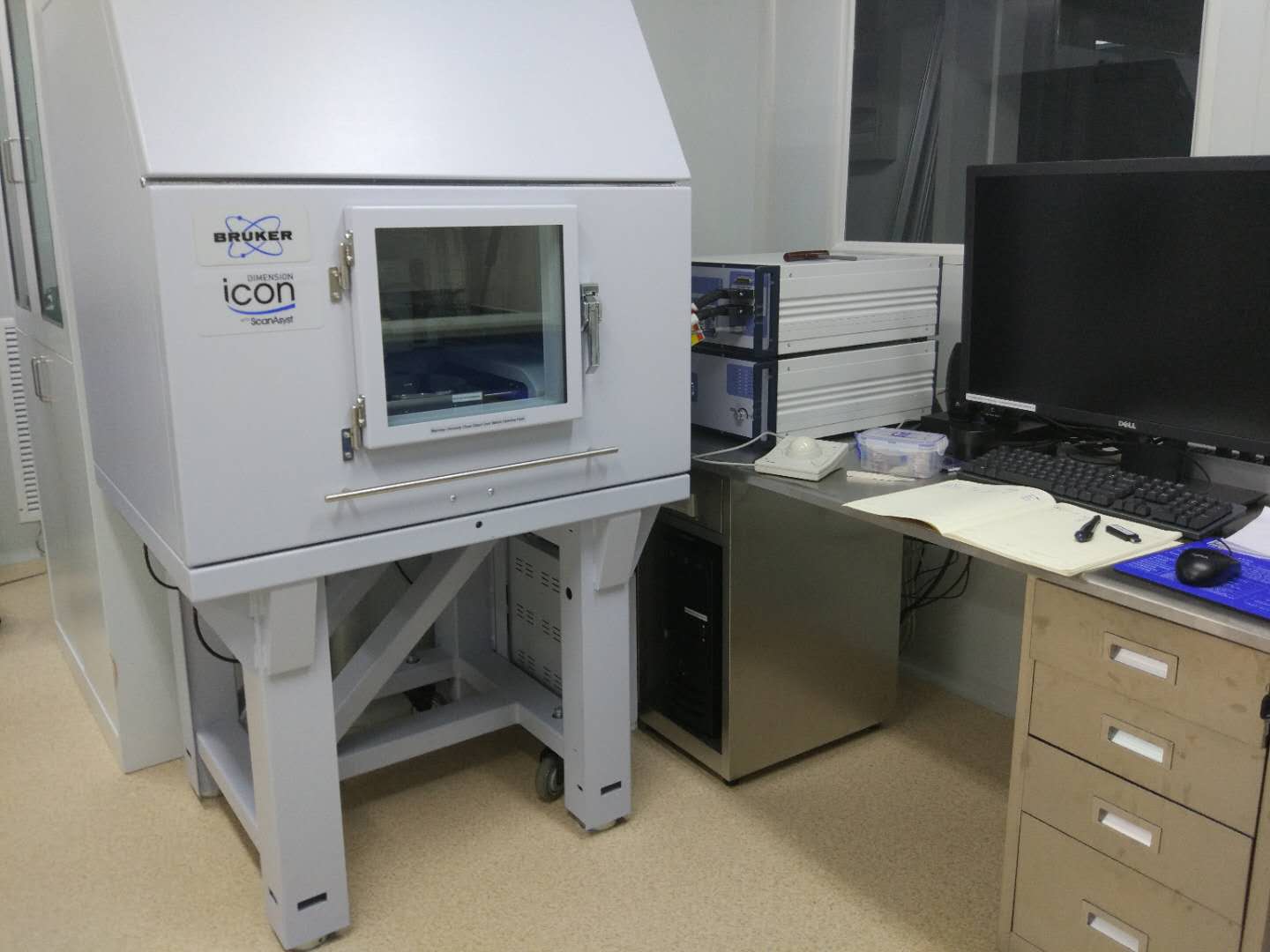 AFM |
 XRD |
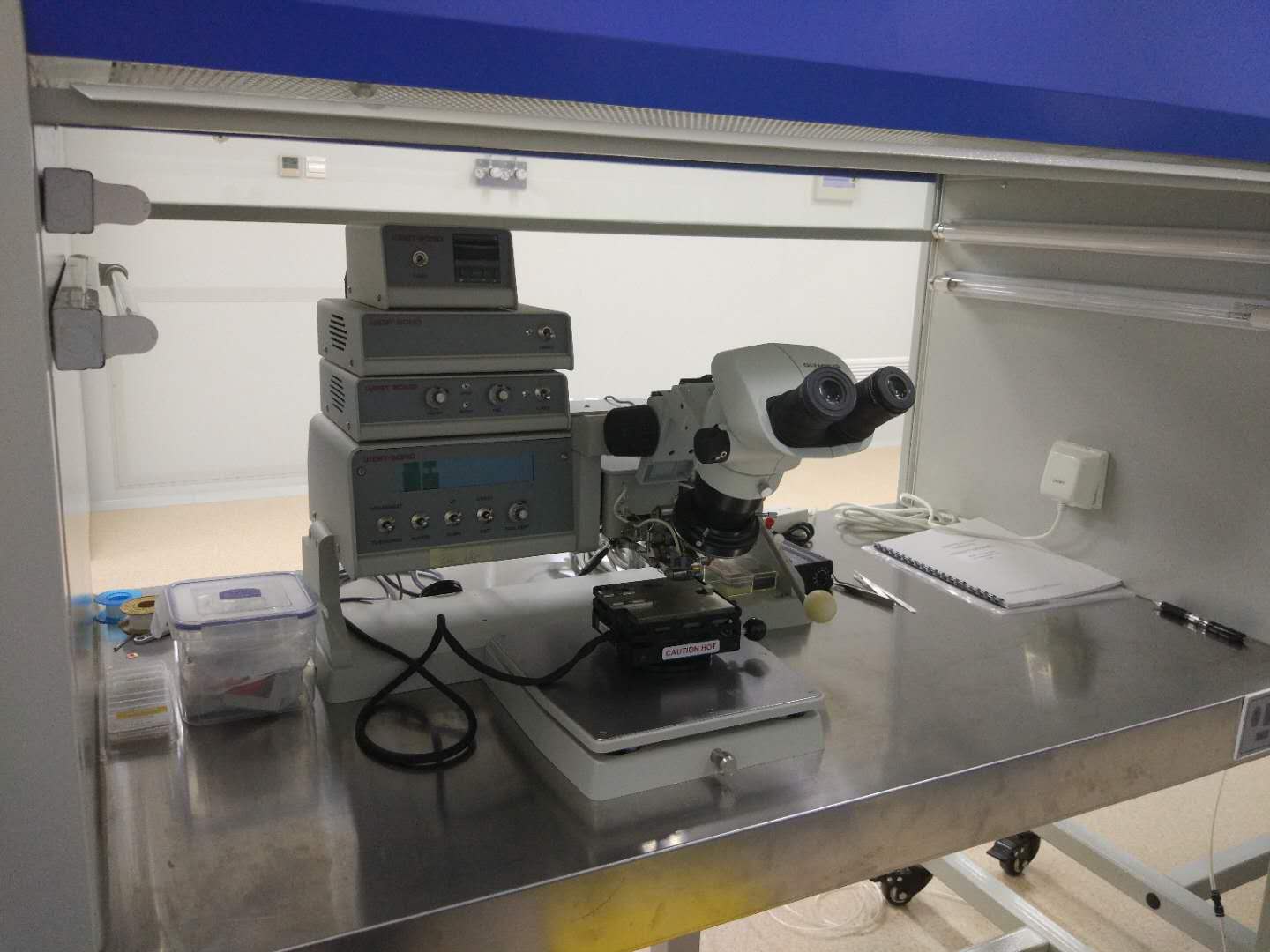 Wire Bonder |
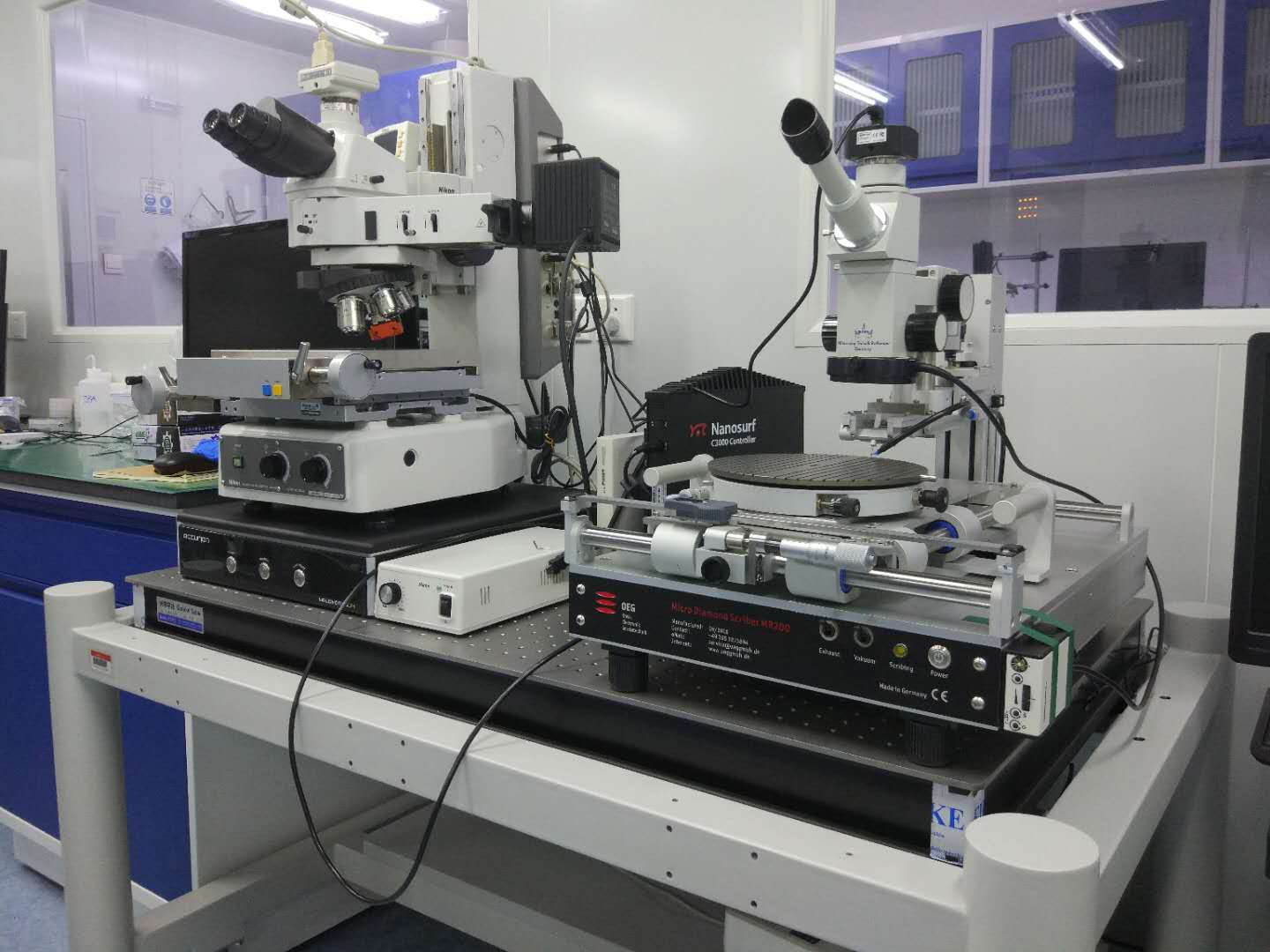 Scriber |
Our laboratory has two low-temperature electrical measurement systems. As shown in the figures below, we have one dilution refrigerator (DR) and one adiabatic demagnetization refrigerator (ADR), which can keep the electrical measurement of TES detector and thin film materials within the temperature range of 50 mK to 100 mK. We have the ability to generate, adjust, and measure basic electrical signals, especially the hardware conditions for acquiring weak electrical signals required by TES research.
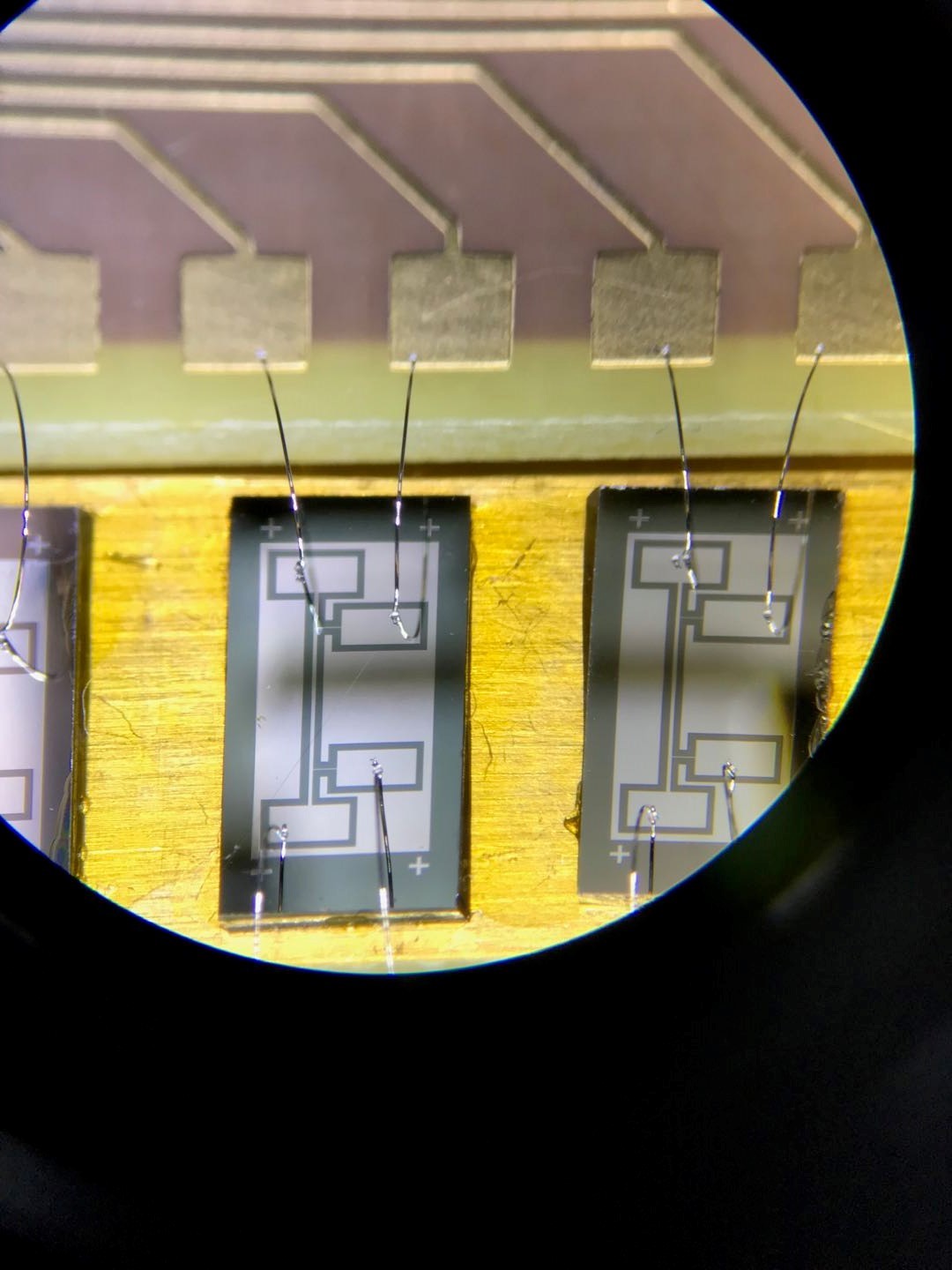 Mo films in sample box |
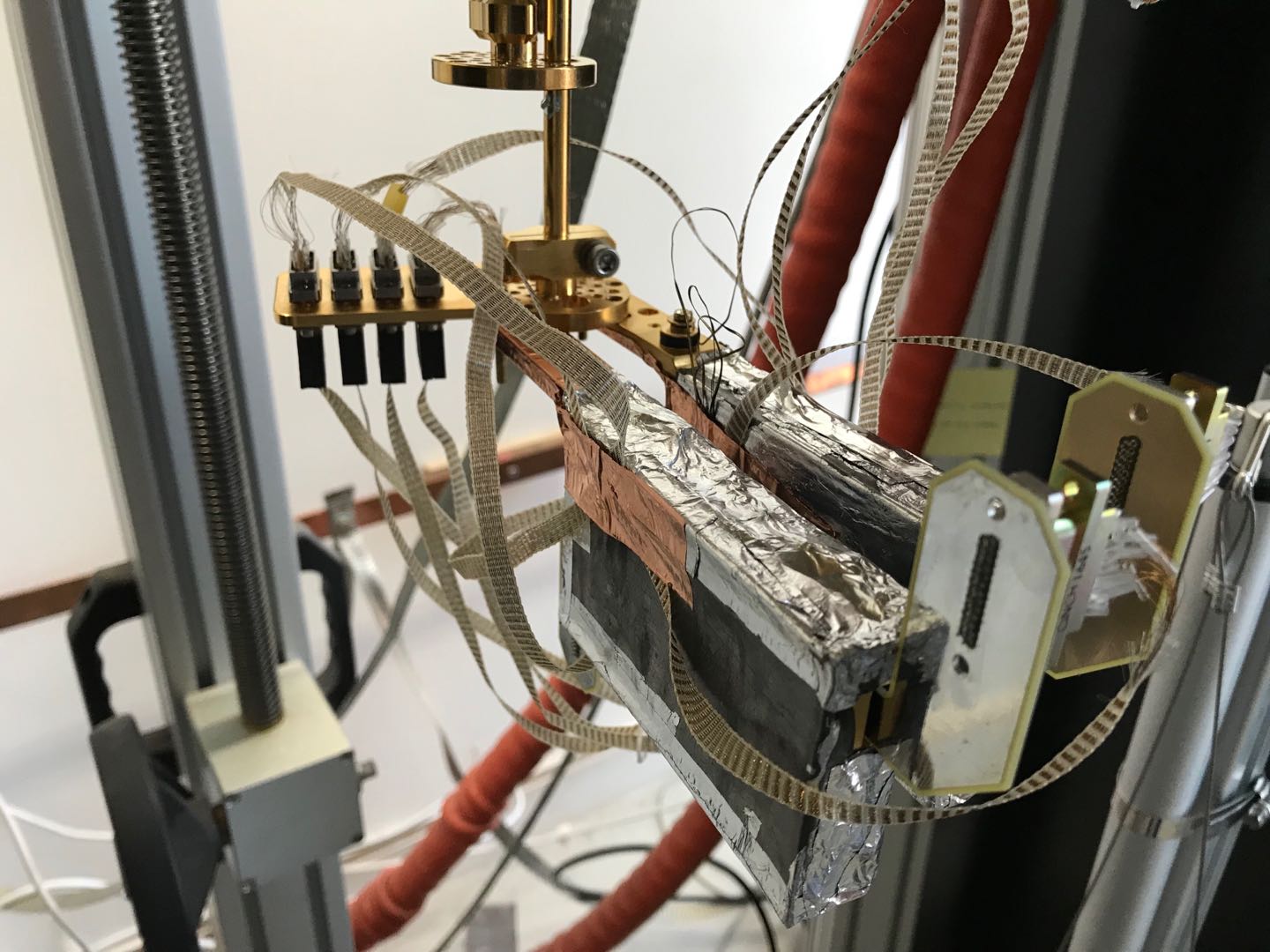 Sample boxes in ADR |
An ADR will be employed by HUBS to provide microwatts cooling power at temperatures below 100 mK. The lab is developing the ADR technology, laying the foundation for constructing an complete ADR system for HUBS (as shown in the schematic). The right picture below shows the process of growing a paramagnetic salt pill, including FAA (Ferric Ammonium Alum) and CPA (Chromium Potassium Alum), which lies at the heart of our ADR.
 Sputtering System
Sputtering System MBE System
MBE System AFM
AFM XRD
XRD Wire Bonder
Wire Bonder Scriber
Scriber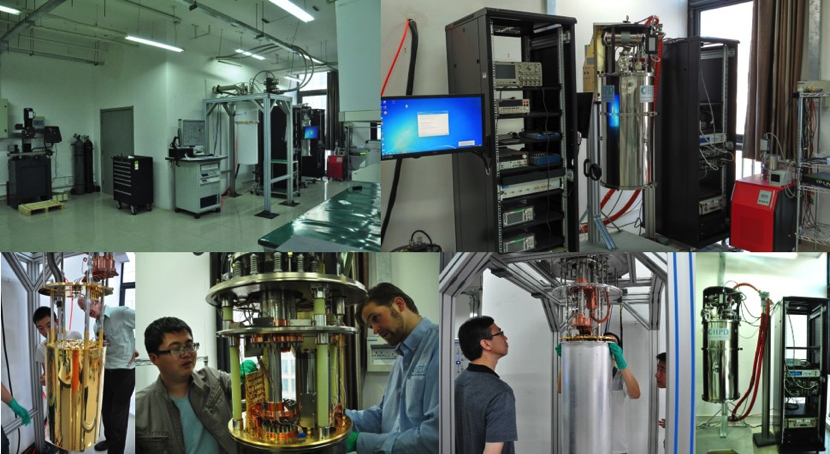
 Mo films in sample box
Mo films in sample box Sample boxes in ADR
Sample boxes in ADR